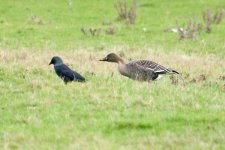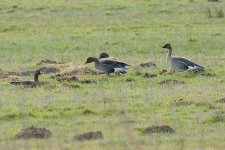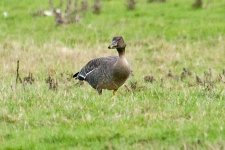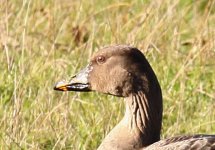petemorris
Well-known member
These two pictures of Bean Geese (in the broad sense) were sent to me today as the observer was concerned about the identification. Of course Tundra Bean Goose is the more likely option in Kent, and that is what they are all being called by the news services. Pic 1 is of a single bird near Woolmer Castle, Pic 2 is of three birds on Worth Marshes. I have only seen these images and not the birds, but the first bird does seem a little long billed for Tundra, shows fairly extensive orange on the bill and some white at the base of the bill. The birds on Worth Marshes also look on the long-billed side and therefore interesting. Anyone else seen them or got better photos? Taiga Bean Goose would be a good bird for Kent.
Cheers
Pete
Cheers
Pete








